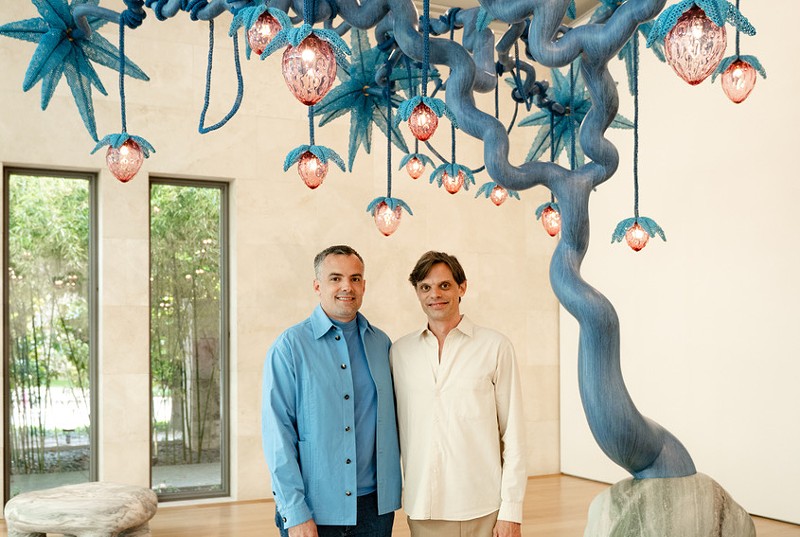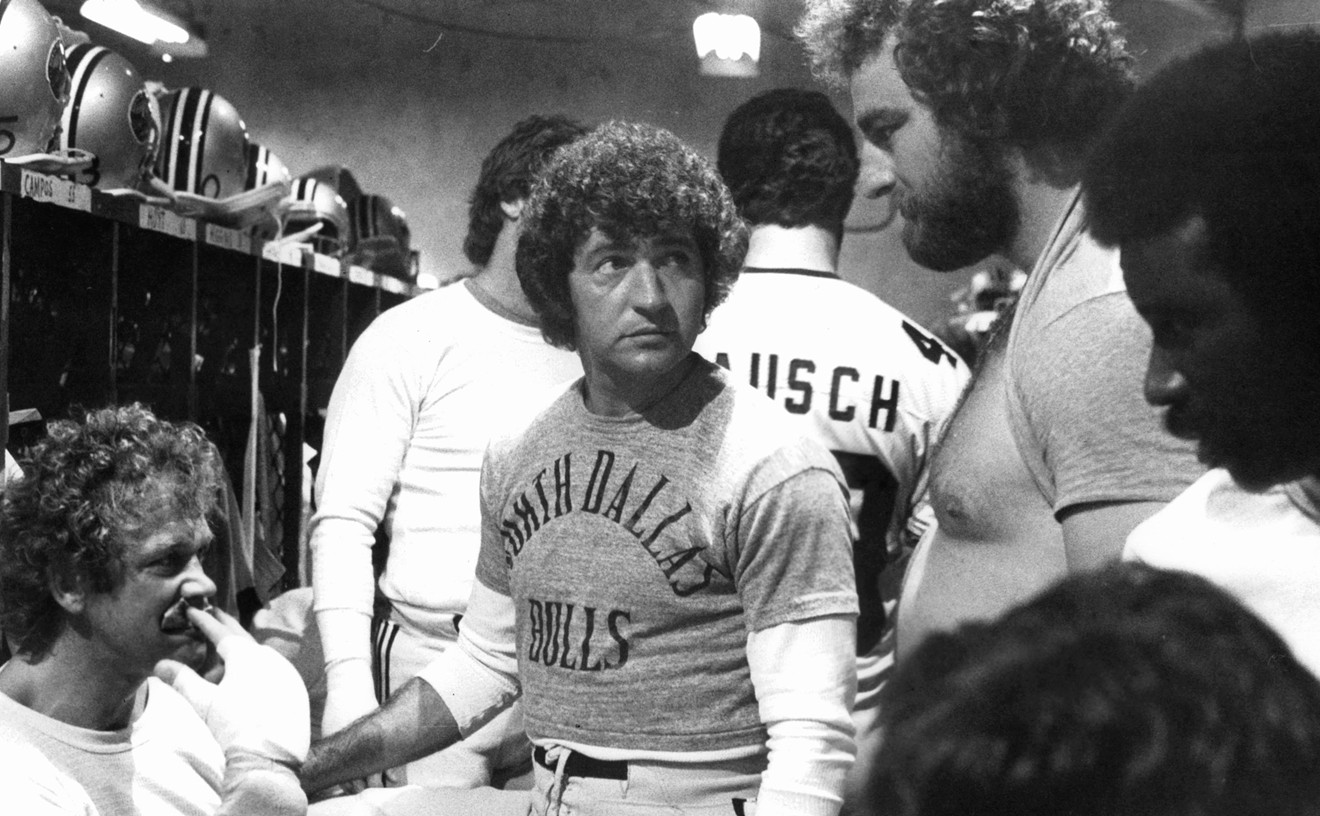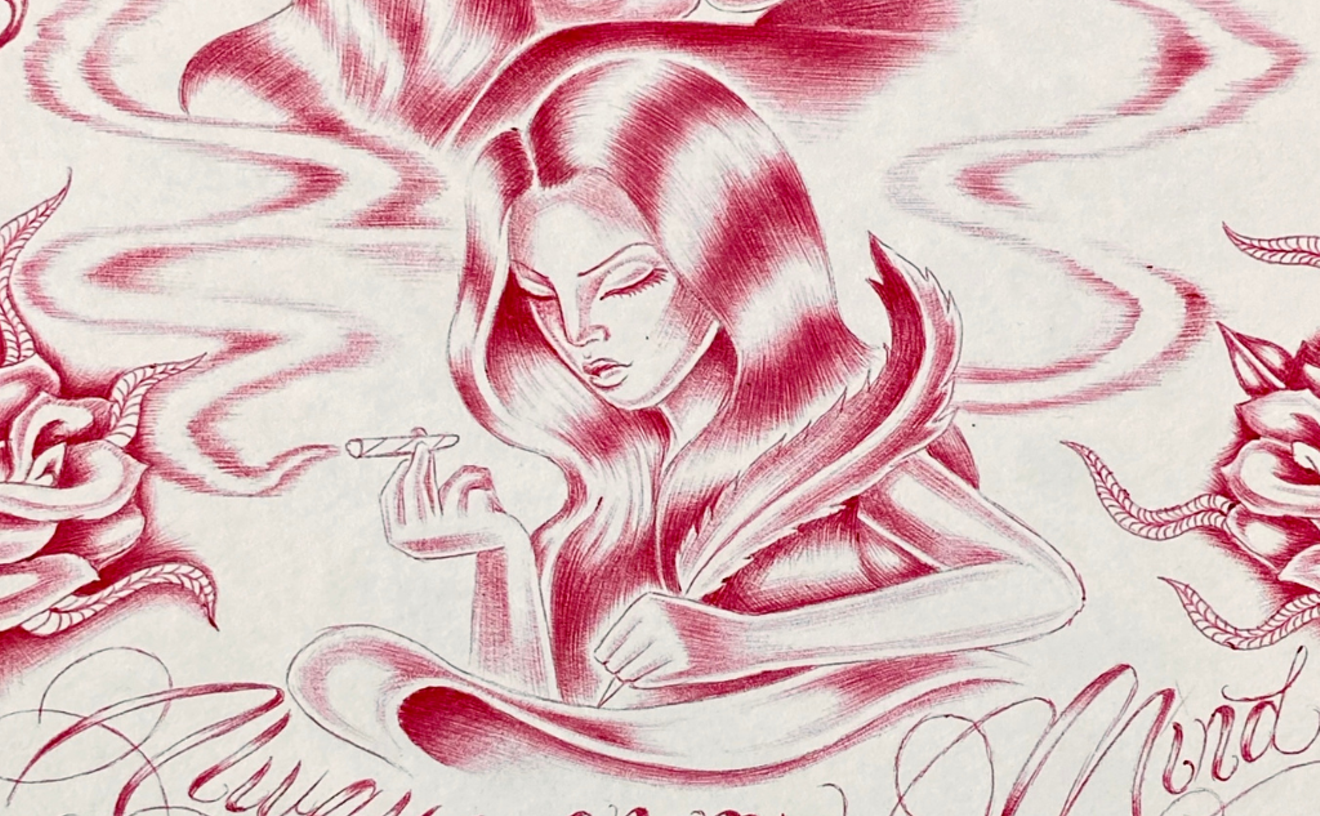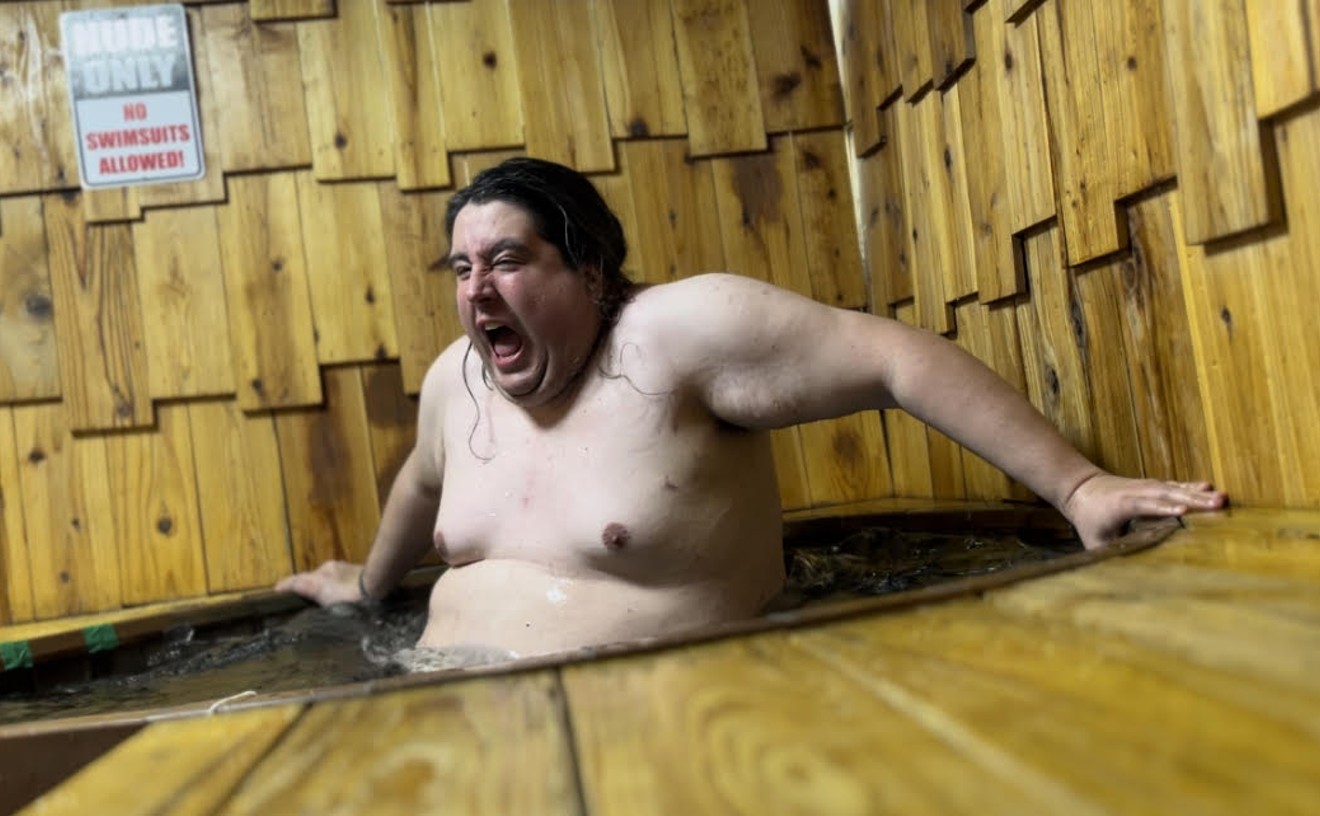The brothers have been honing a blend of art, design and technology since 2010 when they launched their careers as furniture designers. But instead of making finely crafted cabinets or sinuous sofas, the Austin natives made furry club chairs with bronze feet or brass-tiled coffee tables that dripped down to the floor.
These resin, metal, clay and iron designs were artistically (and financially) successful enough that Niki and Simon were soon embraced by the fine-art world, mounting exhibitions at venues like the Savannah College of Art and Design and New York's Marianne Boesky Gallery.
Their latest show, Moonlight, at the Nasher Sculpture Center, highlights the brothers' blend of material and technique with stellar (or lunar) results. Three years in the making, it's the final exhibition under the aegis of museum director Jeremy Strick, who mastered the line between fine art and populist appeal at the Nasher during his long tenure.
The exhibition is instantly charming to the eye, featuring dual "Moon Towers" outside the institution inspired by the streetlights of their hometown, an epically beaded tree, and the eight-foot-tall "Emergent Zoid" (among other works).
At the show's press preview, Niki Haas detailed the process of their most significant piece to date: "The Strawberry Tree," a 15-by-18-by-21-foot sculpture created of bronze, marble, glass and antique Murano beads. Like many of the Haases' works, the piece was a team effort, with over 50 craftsmen and women fashioning the sculpture's beaded vines, leaves and hand-blown fruit.
After the twins discovered a stash of Murano glass beads in a defunct factory, they knew they had to utilize them for something significant. Simon, the tech-obsessed analytical twin and "amateur programmer," mapped out a program the brothers took to a community of women in Lost Hills, California, who crafted the beadwork by hand to the brothers' specifications.
"They could take a tote bag of beads to go to school, raise kids, have a family, then take these small parts home to assemble that will eventually make a larger sculpture," Niki Haas says of the collaborative process. "We did the same thing in South Africa when we [collaborated there]."
Each piece in Moonlight focuses on what the Haas brothers call "emergent forms," although perhaps none so much as "Emergent Zoid," found in the museum's expansive garden. It's crafted of bronze in an aquamarine shade designed to pop on the Nasher's green lawn. Simon devised the Futurama-inspired "Zoidberg" with a computer program that flings shapes together inside a digital space.
"We chose the moment together that we felt was a little ambiguous and exciting," Niki Haas says of the frame, which was eventually frozen and crafted in bronze. "We just wanted to excite the idea of someone thinking about what it might be. A person looking at it becomes a projector. They say, 'That's a dance,' or 'That's an embrace,' or 'That's a fight.' The viewer is in control and in the driver's seat of what this sculpture is all about."
With a blobby tentacled top cradling hand-blown glass globes, the Zoid possesses an inviting whimsy that should please the youngest art fans in the family. Staying in touch with their own childlike wonder is something the 39-year-old fraternal twins keep in mind when evolving their quirky aesthetic.
Trained at an early age at stonemasonry by their sculptor father, Niki and Simon were also influenced by the irreverent humor of 1990s cartoons, including The Ren & Stimpy Show and Beavis and Butt-head, which helped inform a playful style that occasionally dabbles in the profane.
"Ren & Stimpy is a good example," Simon Haas says. "It's kind of funny and grotesque at the same time. That combination makes it a really special show. You'll find that in a lot of our work — you don't see the grotesque [in Moonlight] at all, but a lot of our past work was very sexual and funny at the same time. We've always appreciated that combination."
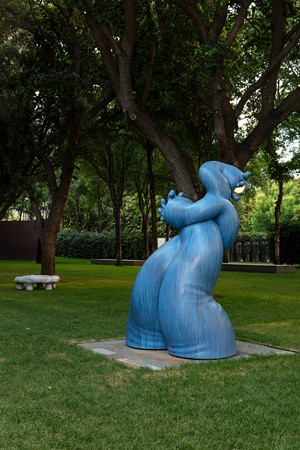
The work of the Haas brothers is on view at the Nasher until Aug. 25.
Kevin Todora/ Courtesy of the Nasher Sculpture Center
The brothers also drew influence from Austin's landscape. During their adolescence, many businesses had giant sculptures on the roof, from a chicken atop the flagship Whole Foods to a dinosaur on the local pizza joint. Although thin on the ground in the post-keep-Austin-weird era, these proudly strange pieces of commercial art seeped into the brothers' consciousness in a way that can be clearly seen in their work today.
Moonlight Sonata
Simon Haas also cites Gaudi, Keith Haring and David Hockney as influences."That was what a sculpture was to us: they're funny, they're relatable, and they're actually cool," he says. "It was the starting off point for everything else we would do later."
Drawing from a Paul Verlaine poem and the famous Debussy "Clair de Lune" piano piece it inspired, Moonlight has its roots in a highbrow sphere. Yet the brothers still added enough of an odd edge to recall the strangeness of how things appear when the sun goes down.
"The poem is about how familiar things become strange in moonlight," says Simon Haas. "That, to us, is about a filter, or it's about the emergent property. You can see your lover in the moonlight, and they look different; the moon has changed them."
As the "Moon Towers" are staged outside the museum, and the strawberry tree shines through the institution's plate glass window, the show can draw even the most casual observer in, especially after the doors are shut for the evening. These illuminated sculptures look spectacular by night, delivering an ethereal quality that will change the viewpoint of those who gaze upon the work.
"We found a lot of poetry in that idea because that's sort of what art is all about," says Niki Haas. "Art shifts your perspective just enough that you're not changing as a person, but you're seeing the world in a slightly different way. That's what moonlight is to us, and what better way to introduce people to the show than to bathe them in moonlight and shift their perspective?"
Moonlight runs through Aug. 25 at the Nasher Sculpture Center, 2001 Flora St.

